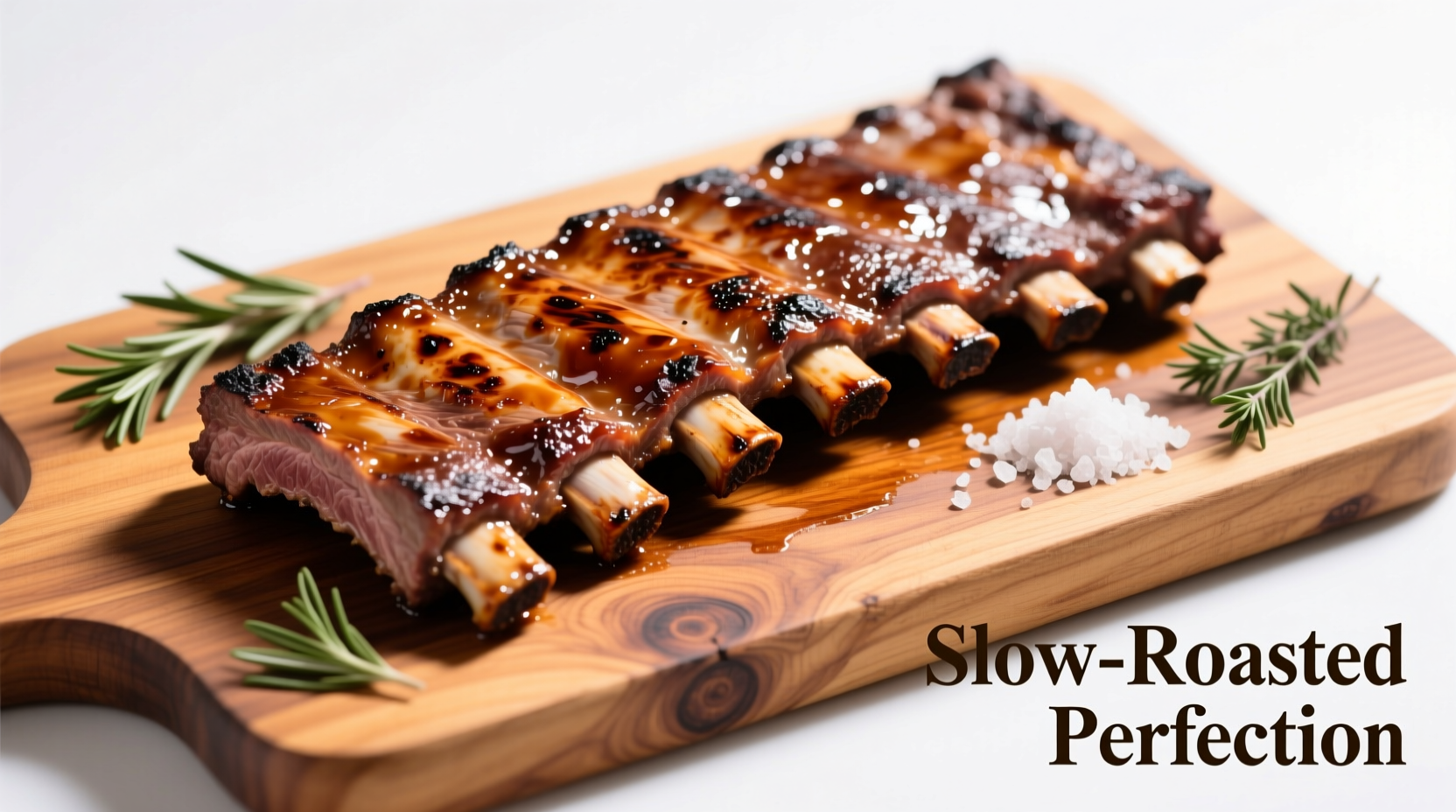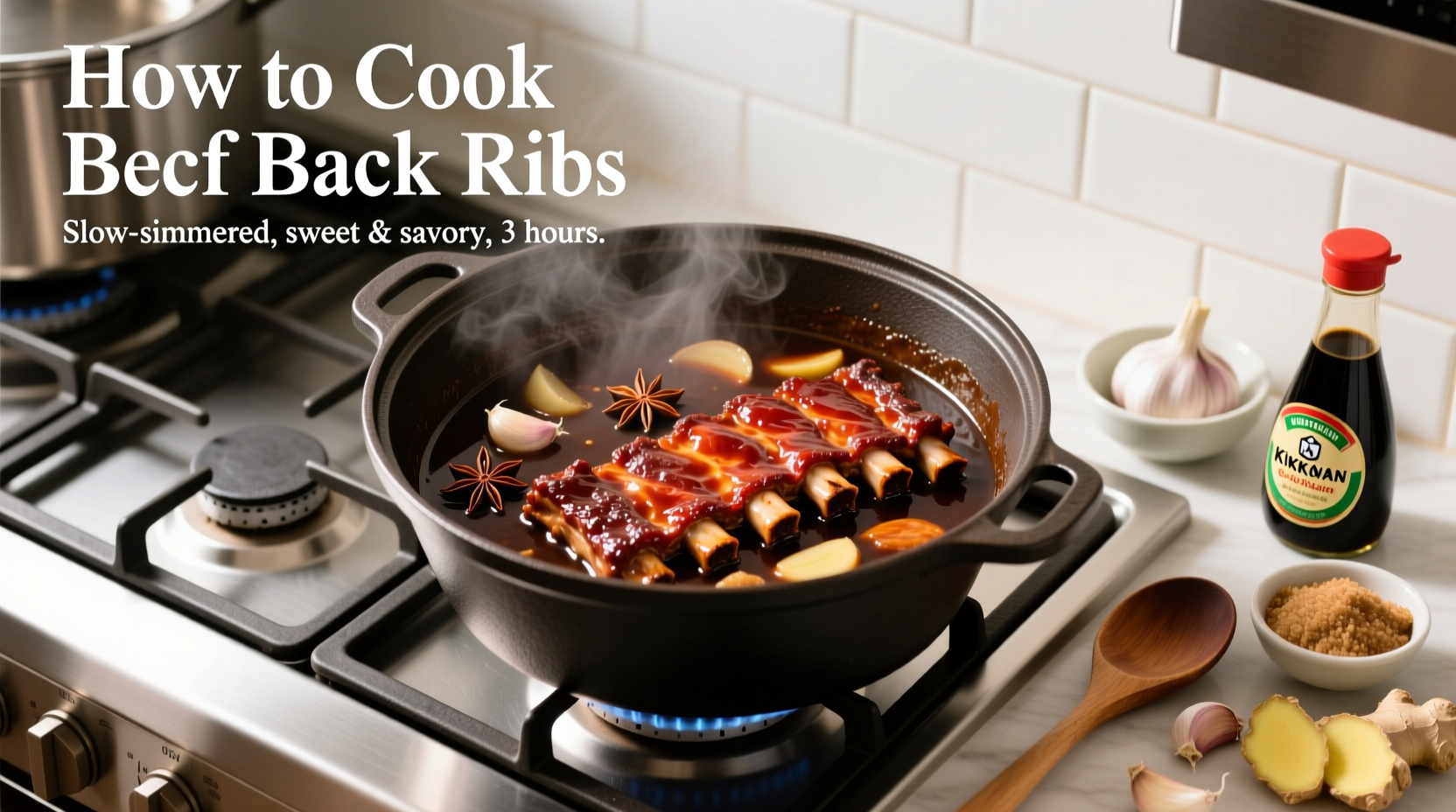The best way to cook beef back ribs is by using the 3-2-1 method: smoke or bake at 225°F (107°C) for 3 hours, wrap in foil with liquid and cook for 2 more hours, then finish unwrapped with sauce for 1 hour. This produces tender, flavorful ribs with perfect texture every time.
Beef back ribs, also known as loin ribs, come from the area between the spine and the top of the rib cage. These meaty ribs contain more bone than belly-side spare ribs but offer exceptional flavor when cooked properly. Whether you're using an oven, grill, or smoker, this guide provides the professional techniques you need for restaurant-quality results at home.
Why Beef Back Ribs Deserve Special Attention
Unlike pork ribs, beef back ribs require longer cooking times due to their higher collagen content. The USDA Food Safety and Inspection Service recommends cooking beef to a minimum internal temperature of 145°F (63°C) with a three-minute rest time for safety. However, for ribs specifically, you'll want to cook them to 195-205°F (90-96°C) to break down connective tissues and achieve that perfect fall-off-the-bone texture without drying out the meat.
| Cooking Method | Temperature | Approximate Time | Best For |
|---|---|---|---|
| Smoker | 225°F (107°C) | 5-6 hours | Authentic barbecue flavor |
| Oven | 275°F (135°C) | 3-4 hours | Consistent results indoors |
| Grill (indirect) | 250-300°F (121-149°C) | 4-5 hours | Outdoor cooking with some smoke flavor |
Essential Equipment Checklist
Before you begin, gather these tools for optimal results:
- Meat thermometer (digital instant-read recommended)
- Aluminum foil or butcher paper
- Sharp boning knife
- Rimmed baking sheet or rib rack
- Wire cooling rack
- BBQ brush for sauce application
Preparing Your Ribs: The Foundation of Flavor
Proper preparation makes the difference between good ribs and exceptional ribs. Start by removing the membrane on the bone side of the ribs. According to the James Beard Award-winning chef and cookbook author Steven Raichlen, this thin membrane prevents seasoning penetration and causes ribs to contract during cooking, resulting in less tender meat. Use a butter knife to lift the membrane at one end, then grip it with a paper towel and peel it off in one piece.
After membrane removal, apply a dry rub. For best results, use a 3:2:1 ratio of brown sugar to paprika to salt, plus additional spices like garlic powder, onion powder, and black pepper. Apply generously to all surfaces and let rest at room temperature for 30 minutes before cooking.

The 3-2-1 Cooking Method: Step by Step
This professional technique delivers consistently tender ribs:
Phase 1: Unwrapped Cooking (3 hours)
Place ribs bone-side down on your cooking surface. Maintain a steady temperature of 225°F (107°C). During this phase, the meat develops a beautiful smoke ring and bark formation. Spritz with apple juice or apple cider vinegar every 45 minutes to keep the surface moist and help the rub adhere.
Phase 2: Wrapped Cooking (2 hours)
After 3 hours, wrap each rack tightly in heavy-duty foil with ¼ cup of liquid (apple juice, beef broth, or water). This creates a steam environment that breaks down tough connective tissues. Place back on the heat source for 2 additional hours. The internal temperature should reach approximately 165°F (74°C) at this stage.
Phase 3: Finishing (1 hour)
Unwrap the ribs and place them back on the cooking surface. Apply your favorite barbecue sauce and cook for 1 more hour at the same temperature. The internal temperature should reach 195-205°F (90-96°C), and the meat should easily pull back from the bones about ¼ inch.
How to Tell When Ribs Are Perfectly Cooked
Don't rely solely on time—use these visual and tactile indicators:
- Bend test: Pick up the rack from one end with tongs; it should bend easily and small cracks may appear in the bark
- Meat shrinkage: The meat should have pulled back from the bones by about ¼ to ½ inch
- Probe tenderness: A toothpick should slide into the meat with little resistance
- Internal temperature: 195-205°F (90-96°C) as measured in the thickest part
Critical Mistakes to Avoid
Even experienced cooks make these common errors:
- Skipping membrane removal: This tough layer prevents flavor penetration and causes uneven cooking
- Temperature fluctuations: Opening the smoker or oven too frequently extends cooking time significantly
- Applying sauce too early: Sugar in barbecue sauce burns at temperatures above 265°F (129°C)
- Cutting immediately: Ribs need 15-20 minutes rest time to redistribute juices
Serving Your Perfectly Cooked Ribs
After resting, slice between the bones with a sharp knife. Serve with extra barbecue sauce on the side and classic sides like coleslaw, baked beans, and cornbread. For best presentation, arrange ribs standing upright on a wooden cutting board rather than laying them flat.
Storage and Reheating Tips
Store leftovers in an airtight container in the refrigerator for up to 4 days. For best reheating results, wrap ribs in foil with a splash of beef broth and warm in a 250°F (121°C) oven for 20-30 minutes. Avoid microwaving, which makes ribs rubbery.











 浙公网安备
33010002000092号
浙公网安备
33010002000092号 浙B2-20120091-4
浙B2-20120091-4